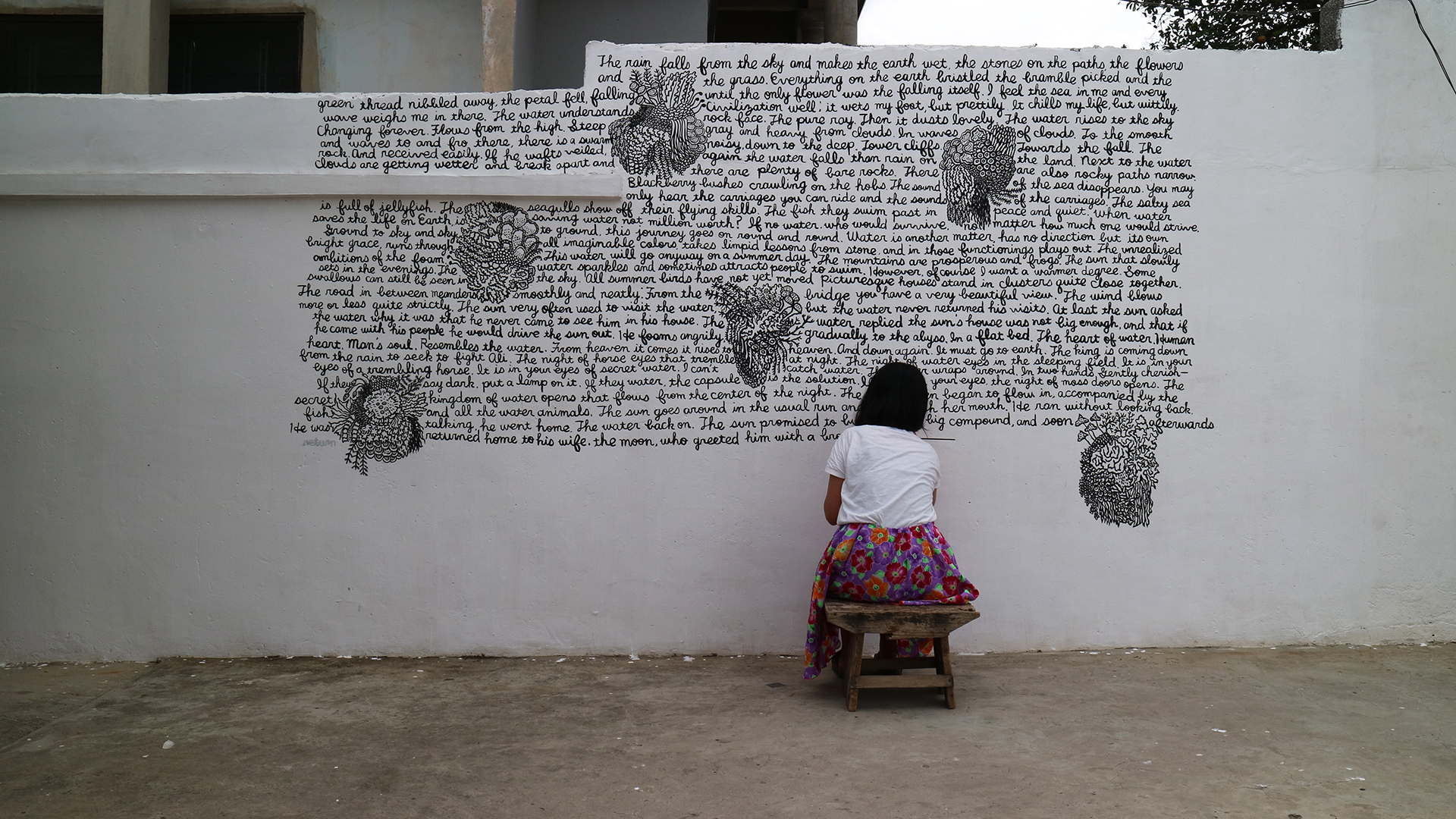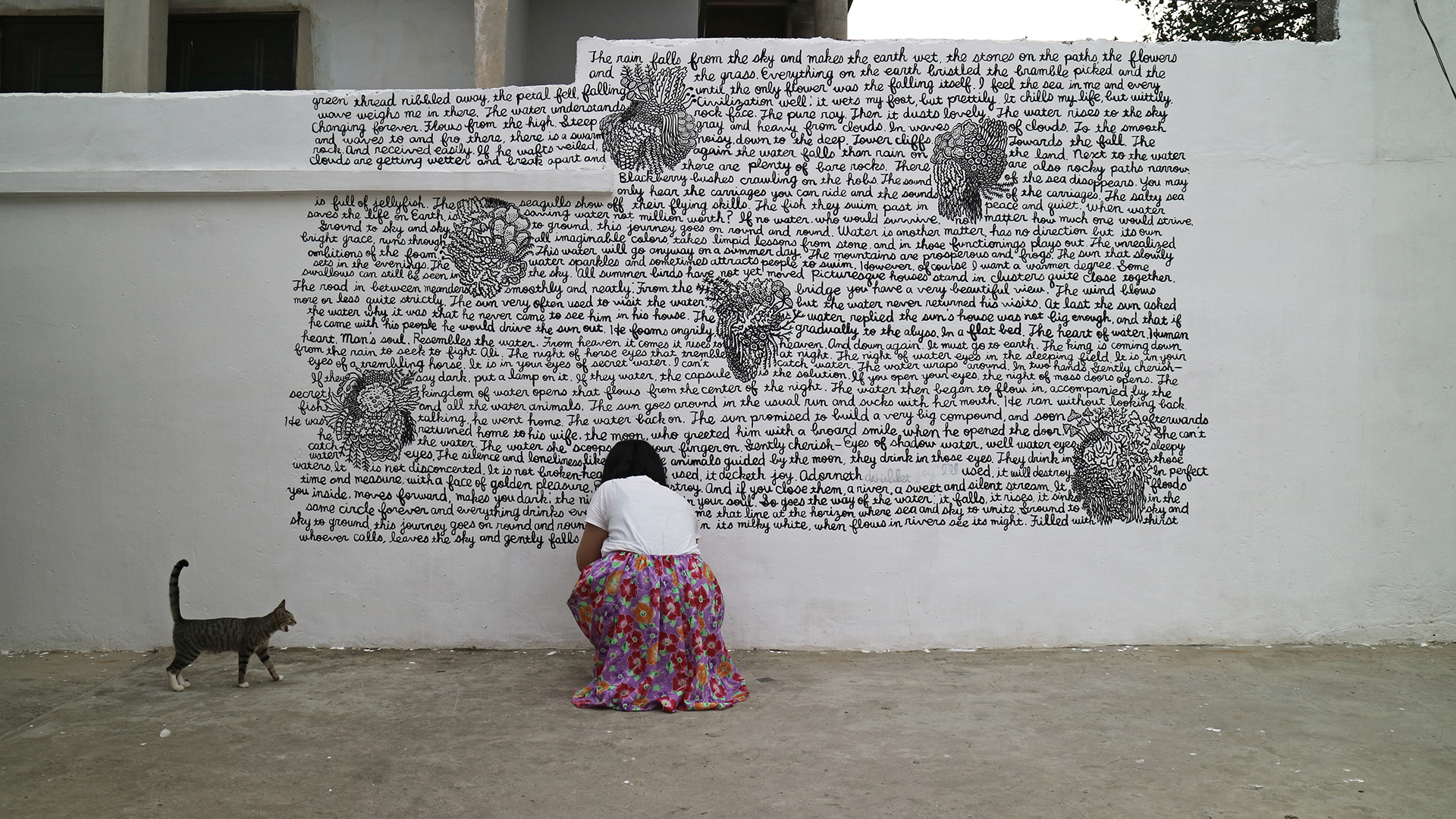

Experiment of engendering collective practice with poems (2021-ongoing)
Mural with collected poems_about_water from residents at perfocraZe International Artist
Residency, Kumasi, Ghana, presented at X:7 exhibition at the residency (March 2021)
Participated by: Marlene Prinz, Martin Toloku, Va-Bene Fiatsi, R. Magdalena Sebald, Eryka Dellenbach, Zoë Binetti, Mawuenya Amudzi, Onsoh Edward, Kathryn Fischer, Amina Gimba
Methodology:
Step 1
>Request a “quick contribution” from a group of people in a particular context you temporarily belong to.
>Choose a non-human subject that you can remind of the ecology surrounding the group.
>Ask the participants to look up a search engine: “a poem about ___ (the chosen subject)” in their familiar language, to choose one website which they think is relevant, and to send the link to you.
>Notify them that they do not need to spend much time searching for a source, which could be a quick search and an intuitive choice.
>Appreciate their contributions. Confirm which names are to be mentioned as contributors. Let them be anonymous if they prefer.
Step 2
>Find poems in the links that the contributors have provided. Use an online translation service in case of unfamiliar languages for a better understanding of the contexts.
>Make a document in a text editor. Copy and paste the found poems in their original languages into the document. If the poems are too long, you can choose an excerpt.
>Translate them into English with the online translation service if the poems are not written in English.
>Organize the document clearly indicating both the original and translated poems, the titles of the poems, the name of authors and contributors, whether in the original languages or translated, the links to the website, and the dates accessed.
>Make another document in the text editor. Copy the English texts from the previous document and paste them into the new document. Highlight each poem with different colors for the sake of identifying each poem.
>Read the poems by paying attention to pronouns and how they relate to the subject.
>Observe similarities and differences among the poems.
>Read each poem again carefully. Divide the lines or sentences of the poems with whitespace between each line.
>Reassemble the lines of the poems into a new poem, making the same number of stanzas as the number of the participants including yourself.
>Try different combinations, read aloud partial/whole texts occasionally, and reassemble them again. Add commas/periods and capitalize or decapitalize letters if it makes more sense for the new texts.
>Repeat the process until feeling content. Apply subjective decision-making to reach the end of the assembling process.
>Add footnotes for each segment of text to indicate the name of the contributors, the links to the websites, the dates accessed, and if the poems have been automatically translated.
>Remove the highlight colors from the text and make sure that the entire text is in the same regular font, font size, line spacing, text, and highlight color.
>Export the document to an editable document format.
Step 3
>Invite the participants to a reading session.
>Make another document with the assembled poem, especially for the reading session. Design the document for the participants to read it easily without the footnotes. Export the document to a fixed-layout document.
>Suggest each participant read aloud a paragraph of the assembled poem at the session and participate in the reading.
>Do not make an order of reading. Let them decide which paragraph and timing for each participant to read.
>Embrace moments of hesitation when several people start reading a paragraph at the same time.
Step 4
>Share a copy of the editable document with footnotes with the participants on a digital data storage service. Ask them for permission to use the document for future public presentations.
>Export the document to a fixed-layout document and present it as your poem.
Step 5 (optional)
>Write an afterthought including a reason why you chose the subject.
Step 6
>Inform all the contributors when you present the poem to public audiences. Indicate the statement below and the names of the contributors together with the poem at the presentations.